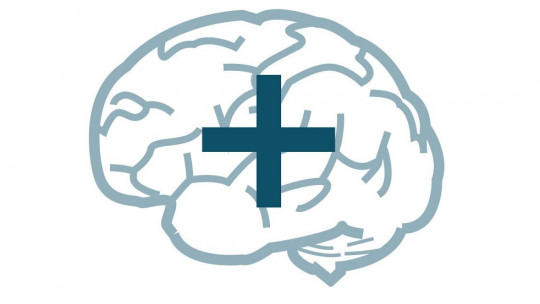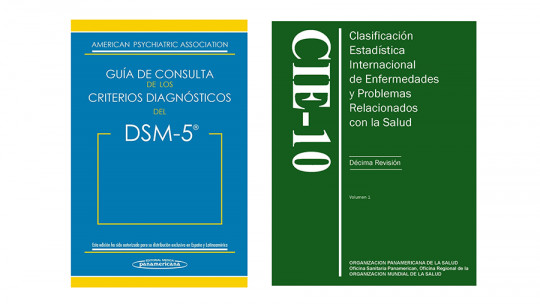Overdiagnosis in mental health is the tendency to diagnose one or more clinical categories of psychiatry in a generalized and disproportionate manner. This is a practice recently questioned within the guild of specialists due to recent increases in different psychiatric diagnoses
However, this is a trend that occurs not only in the field of mental health, but in other specialties due to some elements that characterize contemporary medical practice.
Specifically, Overdiagnosis in mental health can have different impacts at an individual, economic and social level issues that we will see developed below
Overdiagnosis in mental health
Overdiagnosis in mental health has been reviewed especially in Mood Disorders in adulthood, in Attention Deficit Hyperactivity Disorder (ADHD) in childhood, and in Autism Spectrum Disorder in the same stage of development. . The above, after their numbers increased alarmingly and disproportionately in the last decade, especially in the United States, Canada and some European countries (Peñas, JJ. and Domínguez, J., 2012).
According to Pascual-Castroviejo (2008), in a few years the prevalence of ADHD increased from 4% – 6% to 20%, according to different epidemiological studies. When it comes to Attention Deficit Disorder, it is more diagnosed in girls; while Attention Deficit Hyperactivity Disorder is more diagnosed in children.
At the same time, Depression is diagnosed more in women than in men In this case, Leon-Sanromà, Fernández, Gau and Gomà (2015) question the tendency to show overdiagnoses in specialized journals. For example, a study carried out in the southern part of Catalonia and published in the journal Attention Primaria, warned of a prevalence of 46.7% of depression in the general population (53% in women and 40% in men), which meant that almost Half of the total population of this area was in depression.
In contrast, according to the same authors, other studies carried out with the consulting population show a prevalence of only 14.7% for major depression, and 4.6% for dysthymia, which adds up to a total of 19.3%. This figure continues to be alarming; However, it distances us from considering that almost half of the population lives with this diagnosis.
Following different authors, we will see below some of the practices that lead to overdiagnosis and What are its main risks in physiological, psychological, social and economic terms?
Why is overdiagnosis generated?
Overdiagnosis is a consequence of methodological problems present in the study and/or definition of mental disorders, in their detection, and in research on their prevalence. In other words, the study and promotion of diseases is frequently mediated by their definition processes, as well as by the strategic use of detection tools and statistics (García Dauder and Pérez Saldaño, 2017; Leon-Sanromà, et al. 2015).
Specifically in the field of mental health, the validity of the category “disorder”, its non-specificity and its differentiation with respect to the term “disease”, as well as the criteria that define what is “healthy” , and what is not. The same has happened when discussing how mental disorders are diagnosed.
For example, some cases of depression have been confirmed after using imprecise techniques such as the application of a test to which the quality of offering definitive diagnoses is erroneously attributed (tests are detection and differentiation tools, they are not diagnostic techniques in themselves). ) (Leon-Sanromà, et al. 2015).
On the other hand, when evaluating the proportion of individuals who have depression, imprecise techniques have also been used, such as telephone surveys or structured interviews that easily overestimate its prevalence (Ezquiaga, García, Díaz de Neira & García, 2011 ). In addition to this, scientific literature usually pays more attention to underdiagnosis than to overdiagnosis
In line with the above, the methodological problem related to the definition of mental disorders becomes visible in the ease with which they are generalized. An example of this is the tendency to consider that any low mood is pathological, when this is not always the case (Leon-Sanromà, et al. 2015). This state may be a normal, adaptive response to a painful event, and not necessarily a disproportionate and pathological response.
In the same sense, another of the methodological problems related to overdiagnosis in mental health has to do with the tendency to exaggerate or minimize the differences between groups according to different variables such as sex, gender, social class, among others. . Frequently This tendency is implicit in the designs, hypotheses, data collection and analysis in research generating a set of biases about the development and prevalence of different diseases (García Dauder and Pérez Sedeño, 2017).
5 ways to know this practice is happening
There are different factors that can warn that a disease is being overdiagnosed. Likewise, these factors make visible some processes that contribute to this trend. To explain this we will follow the work of Glasziou and Richards (2013); Leon-Sanromà, et al. (2015); and Martínez, Galán, Sánchez and González de Dios (2014).
1. There are more intervention techniques, but they do not reduce diseases
A possible overdiagnosis of a disease can be alerted when an important contradiction is present between the intervention and the prevalence of the diseases: there is an increase in the number of disease intervention techniques (e.g. greater production of drugs and greater medicalization indices). However, this increase does not translate into a decrease in the prevalence of the disorder
2. Increases the diagnostic threshold
On the contrary, it may happen that there is no significant and constant innovation regarding intervention techniques; However, the diagnostic threshold does not decrease, or even increases. In other words, changes in diagnostic criteria increase the number of people affected. This is a common case in mental disorders but it can also be seen in other medical classifications such as osteoporosis, obesity or high blood pressure.
Likewise, the biases influenced by mental health stigma, present both in health personnel and in the non-specialty population, can contribute to a diagnosis becoming generalized (Tara, Bethany and Nosek, 2008).
3. Even risk factors are considered a disease
Another indicator is when risk factors, or substances that indicate biological processes or states (biomarkers) are presented as diseases. Related to this, the definitions of diseases are modified under unclear distinctions between one another; which generates little evidence on the benefits of these modifications compared to the negative effects they may cause. The latter is partly a consequence of the lack of diagnostic precision surrounding some discomforts
In turn, and as we have already said, this imprecision is a consequence of the methodology used in the study and its definition. That is, it has to do with how it is determined what is and what is not a disease, what elements are used for its explanation and what elements are excluded.
4. Clinical variability is not considered
The diagnostic spectrum of mental disorders is not only very broad, but Its definition and criteria are based primarily on agreements between specialists beyond objective evidence.
Likewise, the severity of its symptoms is determined by the intensity, the number of symptoms and the degree of functional impairment. However, this severity frequently becomes generalized or is considered the only face of the diagnoses, which not only increases the number of people with a diagnosis but also the number of people with severe diagnoses.
5. The role of specialists
According to Martínez, Galán, Sánchez and González de Dios (2014), something that contributes to overdiagnosis is the part of medical practice whose interest is merely scientific and the inertia of seeking diagnoses continues under the rigidity of the organicist model
In the same sense, the professional’s posture during consultations plays a relevant role (ibid.). This is so since a health profile occupied by emotional containment does not generate the same effect as the health profile when it goes through the re-production of demand. In the first case, pseudourgency is not favored and therefore, it is not transmitted to the user. In a second it can easily generate a trivialization of medical practice
Finally, given the growing participation of the pharmaceutical industry in mental health, the conflicts of interest of some professionals, health and research centers and public administrations have considerably increased, which sometimes promote or support medicalization through overdiagnosis.
Several of its consequences
Overdiagnosis in mental health is a phenomenon that manifests itself in the short and long term, since it has consequences not only at the individual level but also at the economic and social level. In their analysis of the overdiagnosis of depression, Adán-Manes and Ayuso-Mateos (2010), establish three main impacts:
1. Medical impact
It refers to the increased risk of iatrogenesis, while Excessive medical care and overmedicalization can cause chronic discomfort Likewise, the overdiagnosis of certain disorders can go hand in hand with the underdiagnosis of others, and their consequent lack of attention.
2. Psychological and social impact
It translates into greater stigmatization, with a possible decrease in the user’s autonomy, and a lack of responsibility for the social factors involved in the discomfort. It also refers to the generalization of psychopathology as the most immediate response to everyday life issues even outside the specialized field.
3. Economic impact
It occurs in two ways: the first is the high costs involved in mental health care, especially in primary care services but also in specialized ones, which implies an expense both in infrastructure and in human resources and pharmacological treatments And the second impact is the progressive decrease in the productivity of people with a diagnosis.
Conclusion
Taking these elements and consequences into consideration does not mean denying discomfort and suffering, nor does it mean that it is necessary to stop investing efforts in timely and respectful detections and interventions. It means that it is necessary to stay alert given the possible negative effects of extrapolating biomedical practices towards understanding and bringing together all aspects of human life.
Furthermore, it warns us about the need to constantly review the criteria and methodology that defines and intervenes in mental health.









